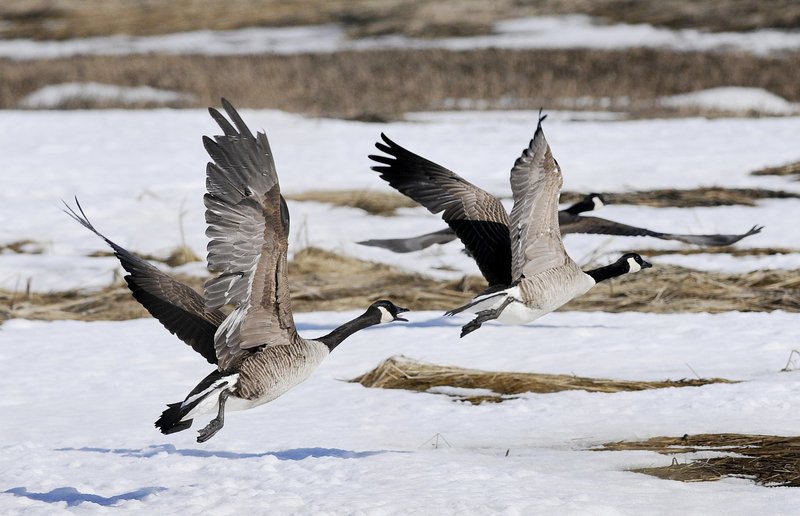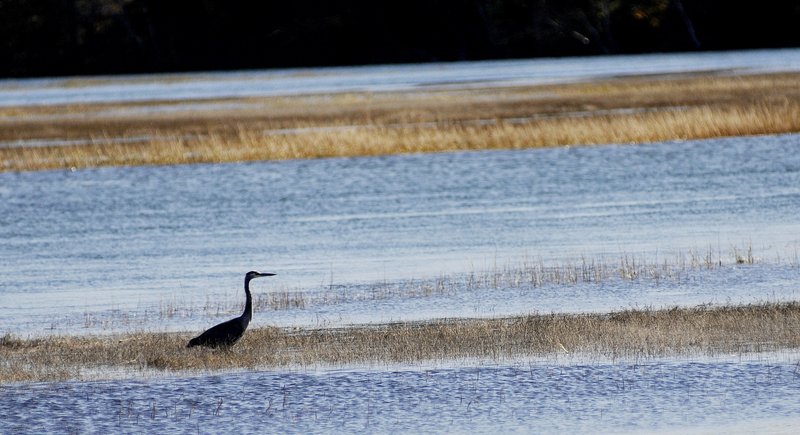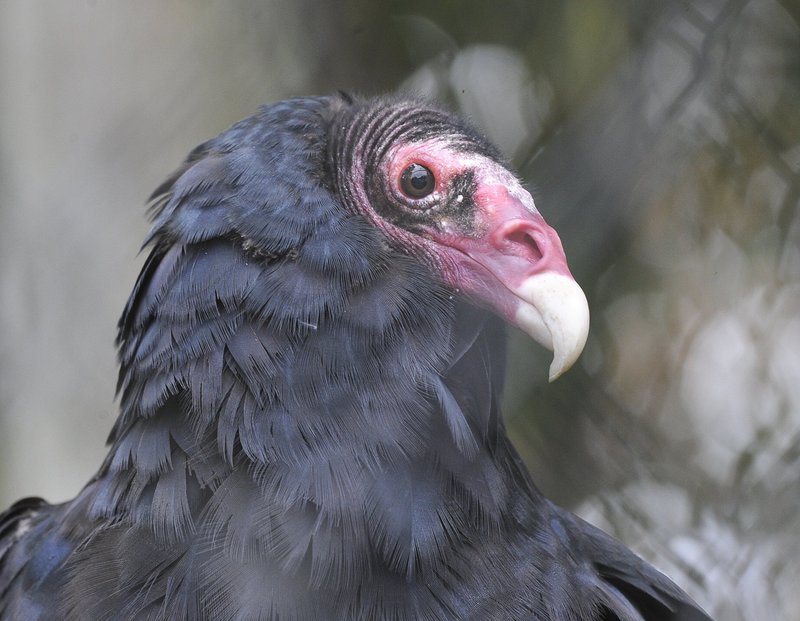The 113th National Audubon Society Christmas Bird Count is now over. Between Dec. 14 and Jan, 5, birders picked a day to count as many birds as possible in a circular area 15 miles in diameter. These count circles are visited each year, providing a valuable snapshot of changing bird populations.
This column is the first of three in which I will describe some of the notable sightings of the 30-plus Christmas Bird Counts (hereafter, CBCs) conducted in Maine.
The Christmas Bird Season really offers us a look at bird abundance in early winter; results would likely be different if the counts were conducted in mid-February.
When analyzing CBCs, I find it useful to divide birds into three groups. The first group includes the resident birds like black-capped chickadees. Have there been any changes in their population size compared to previous counts?
Then there are lingering migrants, sometimes called half-hardy species. Most individuals will spend the winter well to our south but often stick around in Maine until deteriorating weather conditions or the freezing of lakes force them southward. With mostly open water through December, one might expect a good smattering of lingering waterbirds on this year’s counts.
Finally, there are winter visitors that migrate in some years from more northerly areas to spend a “balmy” winter in Maine. These birds include great gray owls, snowy owls, bohemian waxwings, northern shrikes and the northern finches like common redpolls, pine siskins, pine grosbeaks, white-winged crossbills and red crossbills. This year’s counts indicate the current winter is a good one for some of these occasional northern visitors.
The Greater Portland Count on Dec. 15 produced a record-high 111 species.
Canada geese were exceptionally abundant with 2,656 tallied. Five species of owls, including the snowy and long-eared owls, were impressive. A clay-colored sparrow was a nice addition.
The count yielded a rich diversity of half-hardy species: one ring-necked duck, seven great blue herons, five black-crowned night herons, seven turkey vultures, one American kestrel, two American coots, three belted kingfishers, 12 northern flickers, six Carolina wrens, one marsh wren, 30 eastern bluebirds, one hermit thrush, 30 northern mockingbirds, six yellow-rumped warblers, one common yellowthroat, one yellow-breasted chat, four savannah sparrows, one swamp sparrow and four red-winged blackbirds.
The irruptive finches were well represented with two red crossbills, 17 white-winged crossbills, 179 common redpolls and a near-record high 91 pine grosbeaks.
The Augusta CBC, also on Dec. 15, yielded 52 species. Fourteen cedar waxwings were found but no bohemians this year. The dark-eyed junco count was an eye-popping 669.
Lingering species included a wood duck, an eastern bluebird, and 37 American robins. The northern finch list included 21 pine grosbeaks, 119 common redpolls and a pine siskin.
The Waterville count was held on Dec. 16 and produced 60 species. Three immature great cormorants on the Kennebec River were nice finds. Lingering aquatic species included a male northern harrier, two Carolina wrens, one winter wren, one northern mockingbird, a common grackle and three brown-headed cowbirds. A white-crowned sparrow was an unusual bird for this count.
For winter visitors, the counters found an Iceland gull, 110 bohemian waxwings, 104 pine grosbeaks, 642 common redpolls, and two pine siskins.
The Eastport CBC was held on December 26 and yielded a count of 63 species. It’s a great count when bald eagles (962) outnumber house sparrows (15). Numbers of seabirds seemed down a bit with only six black-legged kittiwakes, eight razorbills and 12 black guillemots as particular examples. Northern visitors included a couple of rough-legged hawks, five Iceland gulls, two, northern shrikes, nine pine grosbeaks, 35 common redpolls, a hoary redpoll, and a pine siskin.
Lingering birds included a pine warbler and 10 rusty blackbirds. House finches are rare in the area, so the five counted were notable.
Herb Wilson teaches ornithology and other biology courses at Colby College. He welcomes reader comments and questions at:
whwilson@colby.edu
Send questions/comments to the editors.





Success. Please wait for the page to reload. If the page does not reload within 5 seconds, please refresh the page.
Enter your email and password to access comments.
Hi, to comment on stories you must . This profile is in addition to your subscription and website login.
Already have a commenting profile? .
Invalid username/password.
Please check your email to confirm and complete your registration.
Only subscribers are eligible to post comments. Please subscribe or login first for digital access. Here’s why.
Use the form below to reset your password. When you've submitted your account email, we will send an email with a reset code.